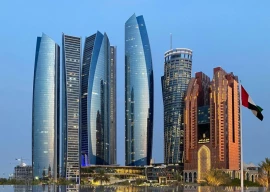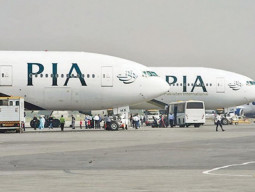1727598332-0/Copy-of-Untitled-(4)1727598332-0.png)
Hezbollah leader Hassan Nasrallah has been killed in an Israeli airstrike that targeted a bunker in Beirut using "bunker buster" bombs, Israeli military officials confirmed on Friday.
The airstrike, which struck the Lebanese capital, used advanced bunker buster bombs designed to penetrate underground structures. The Hezbollah leadership confirmed Nasrallah's martyrdom on Saturday, stating that the fight against Israel will continue.
Israeli Brigadier General Amichai Levin revealed that over 100 types of munitions were dropped on the target, with precision attacks occurring every two seconds. He stated that the operation was based on "solid intelligence" and was aimed at ensuring Nasrallah and others could not escape.
General Amichai Levin also said that Israeli pilots had been on high alert for 11 months, with missions continuing until the war’s objectives are achieved. He emphasised that the work was not yet complete, as the focus will now turn to eliminating Hamas and addressing other security concerns.
1727598489-0/Copy-of-Untitled-(5)1727598489-0.png)
Using such bombs in residential areas would blatantly violate International Humanitarian Law under the Geneva Conventions. / Photo: AFP
Details of Bunker Buster Bombs Used:
-
GBU-28: A 5,000-pound laser-guided bomb developed during the 1991 Gulf War, designed to destroy military bunkers by penetrating concrete or earth before detonating.
-
GBU-37: A GPS-guided bomb capable of striking underground military structures, even in adverse weather conditions.
-
Massive Ordnance Penetrator (MOP): Known as the GBU-57, this 30,000-pound bomb is the largest bunker buster in the U.S. arsenal, capable of penetrating 200 feet of reinforced concrete or 60 feet of earth.
These bombs are specifically designed to detonate after penetrating multiple feet of ground or concrete.
The attack has raised strategic concerns, with such bunker busters being critical weapons in modern warfare for targeting underground facilities, including command centers and missile silos.
Despite this, the use of these bombs in densely populated areas is prohibited under the Geneva Convention due to their potential for widespread, indiscriminate destruction.
Iranian Foreign Minister Abbas Araqchi condemned the attack, claiming that the U.S. supplied Israel with 5,000-pound bunker buster bombs for use in residential areas in Beirut.
Israeli media reported that 15 missiles were fired at Beirut, resulting in the destruction of six buildings, the martyrdom of eight people, and injuries to 91 others.


1737286368-0/trump-(1)1737286368-0-165x106.webp)








1727592397-0/Copy-of-Untitled-(1)1727592397-0-270x192.webp)


1699022668-0/image-800x600-(38)1699022668-0-270x192.webp)
1737185197-0/Express-Tribune-(2)1737185197-0-270x192.webp)
1737188551-0/Untitled-design-(97)1737188551-0-270x192.webp)



1737114296-0/Express-Tribune---News-Desk-(4)1737114296-0-270x192.webp)






COMMENTS
Comments are moderated and generally will be posted if they are on-topic and not abusive.
For more information, please see our Comments FAQ